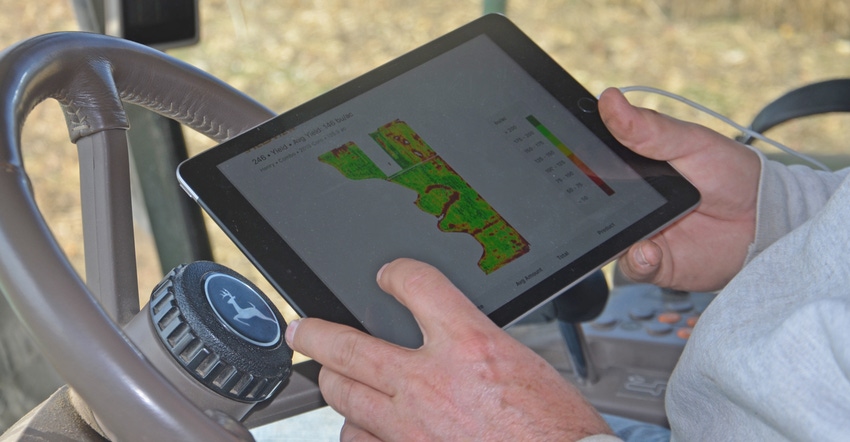
Three farmers recently gathered to share thoughts about how precision technology helped them this year. Joe Haas, Holdrege, Neb.; Nathan Reed, Sedalia, Ken.; and Seth Lawrence, Brook, Ind., gathered virtually over an internet conference — fitting for 2020.
Matthew Sorge, a digital ag adviser for The Climate Corporation, moderated the discussion. A division of Bayer, Climate offers FieldView and supporting services. Climate hosted the virtual conference, and Sorge asked the questions.
Haas is part of Murdoch Farms Inc., a large family farm in south-central Nebraska relying heavily on irrigation. Reed and his wife, Lauren, operate L&N Farms in western Kentucky, raising corn, wheat and soybeans. They also raise broilers on contract. Lawrence joined the family farm in northeast Indiana about four years ago and still maintains a precision ag consulting business.
How did precision technology help you in this unusual year?
Haas: We run three 24-row planters and three tenders, and I couldn’t be in two places at once. Using technology through FieldView, I could keep track of each planter. I could check on monitors to make sure they were planting the right hybrids and know exactly where they were.
The pandemic was just an extra wrinkle to work around. The guys learned to use Facetime on cellphones, so I could be helping one operator adjust the planter in person while talking a second operator through a question using Facetime. Learning to work more with technology was a blessing in disguise that came out of 2020.
Reed: We normally don’t lock in all our chemicals too far in advance, but because of uncertainty due to COVID, we locked them in and took delivery early.
One of the features in FieldView came in very handy when we prepared to spray. I could go in and set up the right prescription for sprayers, and not have to be in the cab with the applicator or anyone else. I knew they were seeing the same thing.
Lawrence: This technology works well with many landlords. Some are retired farmers who now live hundreds of miles away. With features like “remote view,” which Field View offers, they can watch their land being planted and harvested. Several of them like to stay connected, and we can help them do it through precision technology. The only drawback is advanced features like “remote view” don’t work on farms with poor broadband service, and we have some of those.
What is one thing you can’t do now with FieldView that you would like added in the future?
Haas: I would love to separate a boundary within a boundary. Today, if we want to determine which hybrids performed best on irrigated areas, we must separate out dryland yields ourselves. It would be great to have an option that did it automatically.
Reed: We can input our soil-test results, but I would like to see capability for deeper analysis of soil fertility information to help with decision-making.
Lawrence: Building on Nathan’s comment, it would be great if we could write fertilizer recommendations on an iPad and store them with our other soil fertility data. There are integrated applications that allow us to track when we last pulled samples, and when and where we spread what. Having it all in one place would be helpful.
About the Author(s)
You May Also Like




